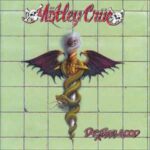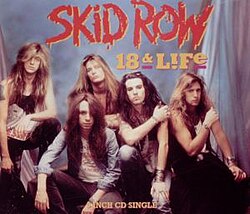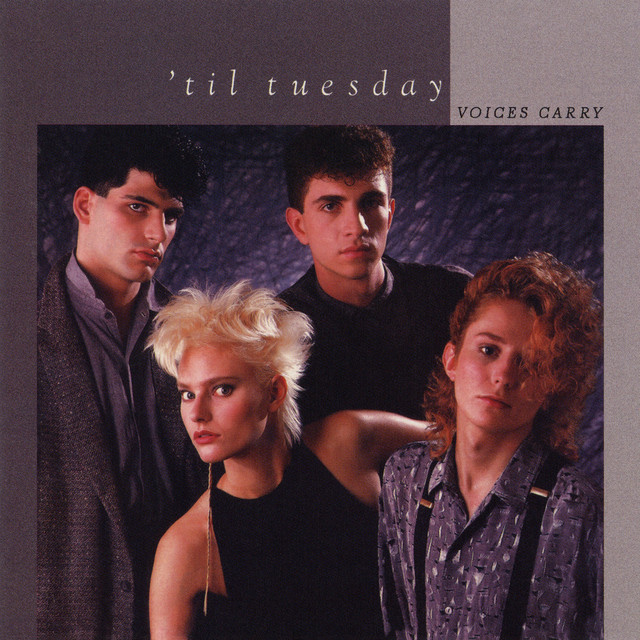 When Dr. Feelgood dropped in 1989, Mötley Crüe were on a mission to prove they weren’t just the kings of chaos—they were the kings of hard rock itself. After years of indulgent mayhem that nearly tore the band apart, the Crüe found themselves surprisingly sober, focused, and fired up. The result was a sonic overdose of swagger, danger, and groove, led by the monster title track, “Dr. Feelgood.” It wasn’t just another glam-metal anthem—it was the sound of a band at their absolute peak, surgically clean in production yet dirty in attitude, and it quickly became one of the defining hard rock songs of the late ’80s.
When Dr. Feelgood dropped in 1989, Mötley Crüe were on a mission to prove they weren’t just the kings of chaos—they were the kings of hard rock itself. After years of indulgent mayhem that nearly tore the band apart, the Crüe found themselves surprisingly sober, focused, and fired up. The result was a sonic overdose of swagger, danger, and groove, led by the monster title track, “Dr. Feelgood.” It wasn’t just another glam-metal anthem—it was the sound of a band at their absolute peak, surgically clean in production yet dirty in attitude, and it quickly became one of the defining hard rock songs of the late ’80s.
The Song That Saved the Crüe
“Dr. Feelgood” came from an era when excess wasn’t just accepted—it was celebrated. But by the late ’80s, even Mötley Crüe had reached their limit. After years of drug abuse, fights, and chaos, the band finally decided to get sober before recording. Producer Bob Rock, fresh off projects with The Cult and about to reshape Metallica’s sound in the coming decade, pushed the Crüe to lock in as a unit. What emerged was a new kind of precision: a heavier, more muscular sound that still dripped with sleaze.
The song “Dr. Feelgood” was the perfect symbol of that transformation. Written by bassist Nikki Sixx and singer Vince Neil, it tells the story of a drug dealer named “Dr. Feelgood”—a street-level kingpin who keeps his clientele hooked and his operation running like a business. It’s a song about power, temptation, and control, told through a distorted mirror of the band’s own past indulgences.
But what made “Dr. Feelgood” stand out wasn’t just the lyrics—it was the riff. Mick Mars delivered one of the nastiest, most recognizable guitar lines of the decade, a thick, chugging monster that slithers and stomps like a street fight in slow motion. Tommy Lee’s drums hit like pistons, locked into a mechanical precision that made the song’s groove irresistible. Bob Rock’s production layered every hit, every snare, every vocal scream into a wall of sound that felt larger than life.
A Lesson in Groove and Grit
Part of what made “Dr. Feelgood” such a breakthrough was its combination of metal grit and funk-inspired rhythm. The groove was massive. You could headbang to it, sure, but you could also move to it. Tommy Lee’s drum pattern, with its sharp hi-hat snaps and deep kick, gave the song a bounce that was rare for the L.A. metal scene. This wasn’t just about volume—it was about feel.
And that’s what Bob Rock understood. He stripped away the muddiness that plagued earlier Crüe records and gave each instrument its own space to breathe. The guitars sounded like jet engines. The bass throbbed with menace. Vince Neil’s voice, often buried in earlier mixes, was pushed forward with a dangerous clarity.
Lyrically, the song wasn’t deep poetry—it was a cartoonish tale of street hustling and vice—but that was exactly the point. Nikki Sixx wrote it like a grindhouse film in musical form: loud, lurid, and proudly over the top. When Vince snarls lines like “He’s the one they call Dr. Feelgood, he’s the one that makes ya feel all right,” it’s both a warning and a celebration. The band knew they were flirting with irony. After all, they were the dealers of excess, and here they were, selling one more fix to their fans—only this time, it was through sound, not substances.
Mötley Crüe’s Sonic Makeover
By the time Dr. Feelgood hit shelves, Mötley Crüe were no longer just another Sunset Strip band—they were a global brand. MTV put the video into heavy rotation, and the single shot to No. 6 on the Billboard Hot 100, the band’s highest-charting hit. The album itself became their first and only to reach No. 1, and it stayed on the charts for more than a hundred weeks.
“Dr. Feelgood” wasn’t just a hit; it was a reinvention. The Crüe had always been dangerous, but now they were professional. The wild boys who nearly died on the road were suddenly sounding tight, disciplined, and commanding. Fans noticed. Critics—many of whom had dismissed them as glam rock caricatures—had to admit that this was something new.
What’s especially impressive about “Dr. Feelgood” is how timeless it sounds even today. The production, while unmistakably late ’80s, holds up because it’s rooted in live energy. You can feel the air in the room when Tommy hits those toms, and you can sense the tension in Mick’s strings as that riff growls its way through the chorus.
The Anthem of Excess and Survival
Every great hard rock song captures a mood, and “Dr. Feelgood” nailed the late ’80s perfectly. This was the sound of Los Angeles at its peak—sleek sports cars on Sunset Boulevard, neon lights, fast living, and an undercurrent of danger beneath the glamour. The song’s title character could easily be a metaphor for Hollywood itself: seductive, powerful, and always ready to offer another hit.
It’s also impossible to separate the song from the band’s story. Nikki Sixx had literally died and been revived after a heroin overdose just two years earlier. Vince Neil had gone through tragedy and legal trouble after a fatal car crash. Tommy Lee and Mick Mars had their own battles. “Dr. Feelgood” was their exorcism—a swaggering declaration that they’d survived hell and come back louder.
When they performed it live, it became the centerpiece of their shows. The lights would drop, the riff would crawl out of the darkness, and the crowd would explode. It was theatrical, primal, and perfectly Mötley.
Why It Still Matters
More than three decades later, “Dr. Feelgood” still feels vital. It’s one of those songs that defines an era but transcends it too. You don’t have to be a diehard glam-metal fan to appreciate the craftsmanship behind it. It’s got the riff, the hook, and the attitude—all the essential ingredients of a rock classic.
You also can’t ignore its influence. The success of Dr. Feelgood pushed other bands to step up their production game. Suddenly, everyone wanted that big, clean, punchy sound. Bands like Skid Row, Warrant, and even Metallica benefited from the sonic template Bob Rock helped shape here.
“Dr. Feelgood” also represents the last great gasp of ’80s excess before grunge crashed the party. Just two years later, Nirvana would release Nevermind, and the neon dream would fade into flannel. But for that brief window, songs like “Dr. Feelgood” ruled the airwaves, unapologetically loud and brash, celebrating everything rock had become—before the hangover set in.
The Band at Their Peak
What’s especially interesting about this period is how cohesive the Crüe were. Vince Neil’s vocals had never sounded better—sharp, sneering, perfectly suited for the song’s swagger. Nikki Sixx’s bass provided a deep, steady pulse that grounded the chaos. Mick Mars’ guitar tone was filthy and precise at the same time, and Tommy Lee’s drums were thunderous.
It’s easy to dismiss Mötley Crüe as a band of excess and spectacle, but “Dr. Feelgood” reminds us that they could seriously play. Underneath the leather and lipstick were four musicians who understood how to craft a riff-driven anthem that still holds up decades later.
The Doctor’s Orders
Listening to “Dr. Feelgood” now feels like time travel. You can practically smell the gasoline and Aqua Net. But beyond nostalgia, it’s a masterclass in how to make hard rock fun. The lyrics might be over the top, the production massive, but there’s an energy that’s impossible to fake. This was a band that had lived on the edge, looked over the cliff, and somehow climbed back up with a grin.
It’s no wonder the song remains a staple at every Crüe concert, from the reunion tours to The Stadium Tour that reignited the band’s legacy in the 2020s. When that riff kicks in, fans of all ages know exactly what’s coming. It’s rock therapy in its purest form—a reminder that music can still be dangerous, ridiculous, and totally exhilarating all at once.
Final Diagnosis
“Dr. Feelgood” isn’t just Mötley Crüe’s biggest hit—it’s their mission statement. It’s the sound of a band embracing its demons and turning them into gold records. It’s the moment they proved that behind the sex, drugs, and headlines, there was real talent and ambition driving the chaos.
The 1989 single gave the world a final blast of hair metal glory before the decade ended, and it still feels powerful enough to rattle the walls today. Whether you love Mötley Crüe for their reckless image or their musical muscle, “Dr. Feelgood” is where both sides come together perfectly.
The doctor’s orders are simple: turn it up, let that riff hit, and remember when rock still felt dangerous. Because for those five minutes and forty seconds, it still does.


